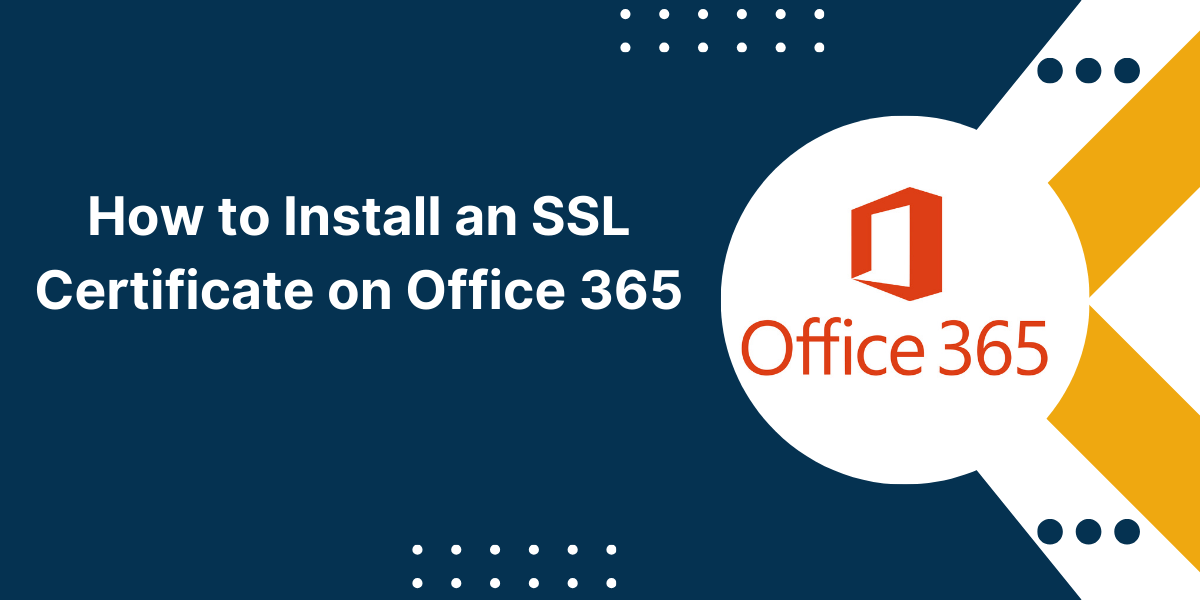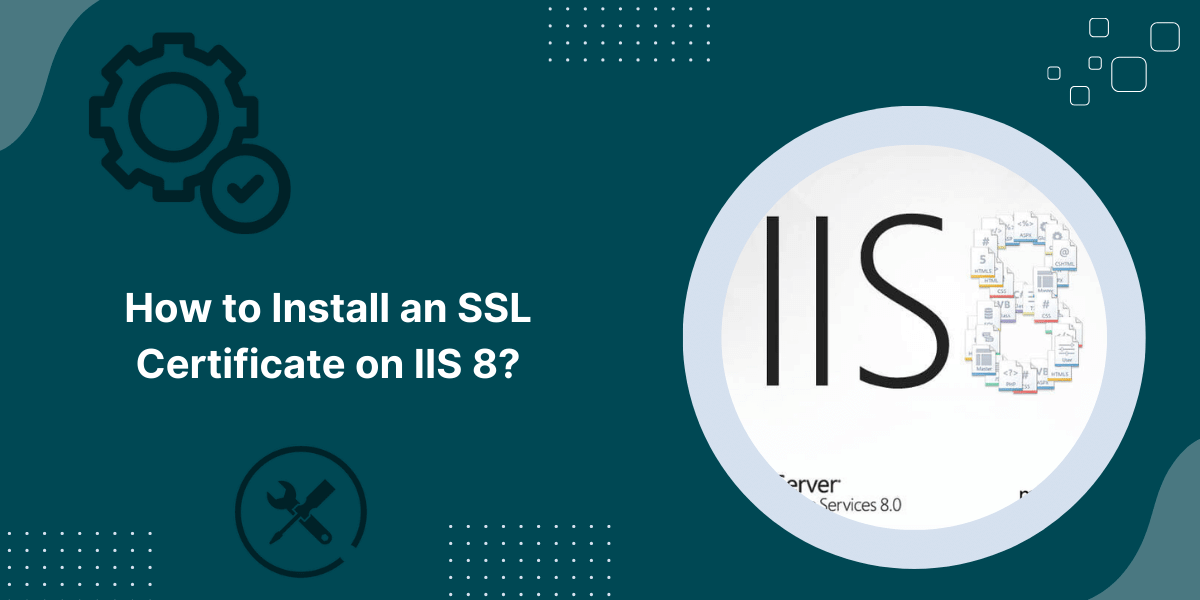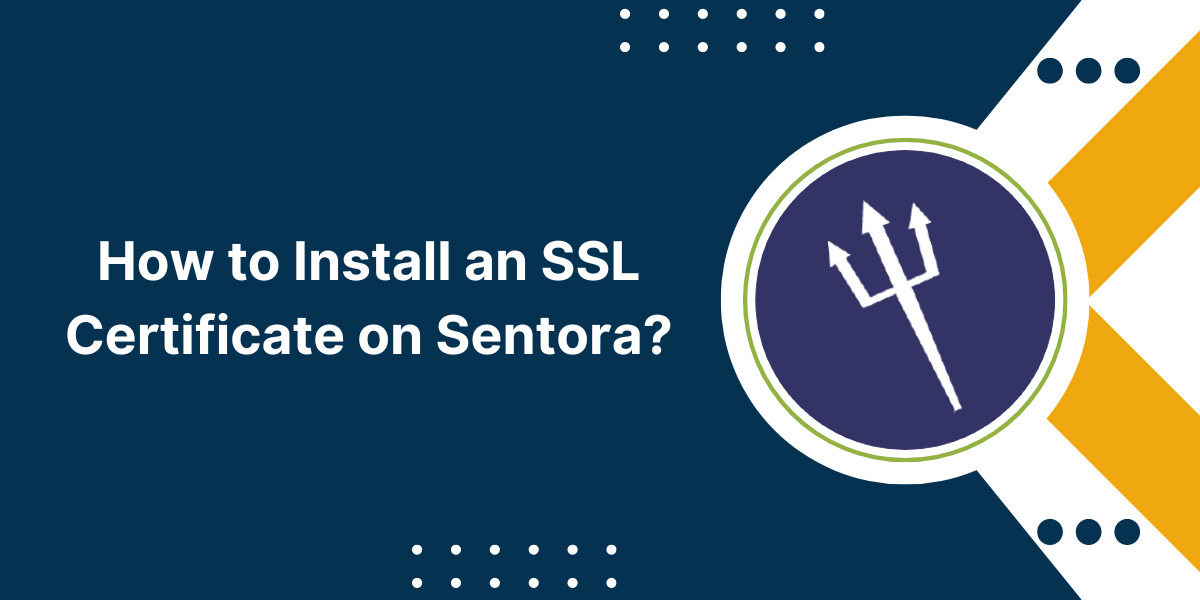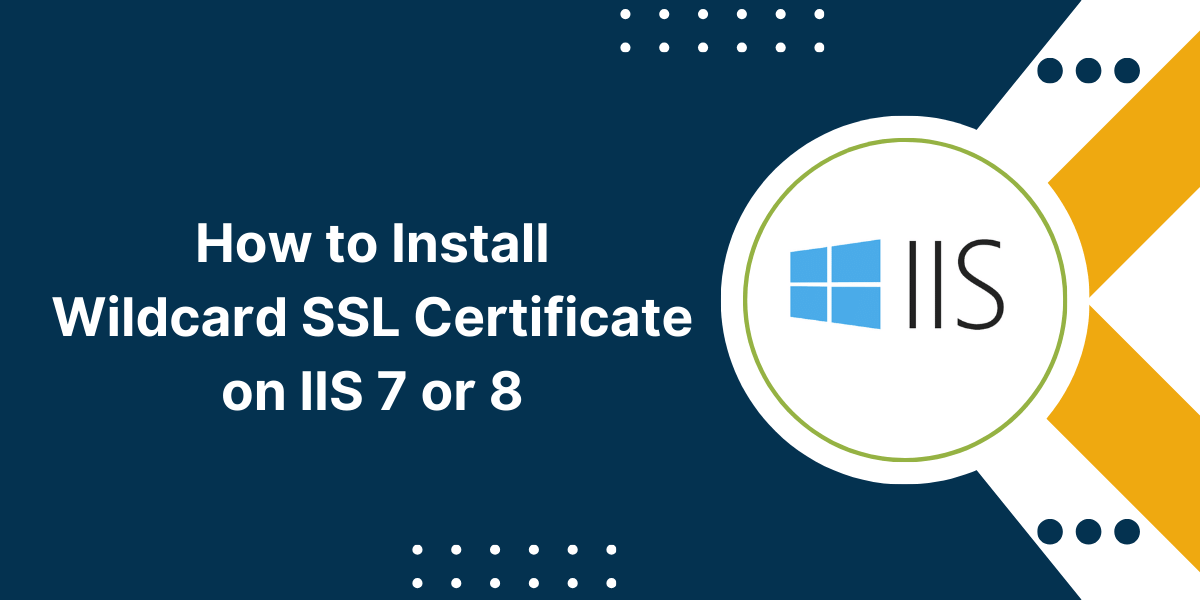Microsoft Office 365: SSL Certificate Installation (IIS) Guide
With over 145 million active commercial monthly users, Microsoft Office 365 has become the productivity suite of choice for businesses worldwide. However, like any cloud-based platform, Office 365 faces data security threats. The best way to protect sensitive information is by Installing an SSL Certificate on Office 365. SSL certificates create an encrypted connection between a server and browser, protecting data from interception.
When you Install an SSL Certificate on Office 365, it allows users to transmit information securely. This guide will walk you through the entire process of Installing an SSL Certificate on Office 365 step-by-step to enable encryption and prevent unauthorized access to data. Installing an SSL Certificate on Office 365 is crucial to secure the platform and protect sensitive information in transit. Follow this comprehensive guide to properly Install an SSL Certificate on Office 365 and safeguard your business data.
Why Do You Need SSL for Office 365?
While Microsoft implements certain security measures for Office 365 by default, these are not enough to completely safeguard sensitive data. An SSL certificate adds an extra layer of security with many benefits:
- Data Encryption: All data exchanged between the Office 365 servers and client browsers remains encrypted and away from cybercriminals.
- Authentication: SSL certificates authenticate the identity of the Office 365 domain, assuring users they are on the legitimate platform.
- Trust and Credibility: The SSL padlock and green address bar in browsers builds trust among your website visitors.
- Compliance: Installing SSL helps comply with industry standards like HIPAA and PCI DSS.
- Search Engine Ranking: Websites with SSL certificates get a slight boost in search engine results pages (SERP).
Prerequisites for Installing SSL on Office 365
Before starting the SSL installation process, ensure the following prerequisites are met:
- You have administrative control of the Office 365 account.
- The domain you want to secure is already added and verified in Office 365.
- You have access to the DNS records for your domain to create the required text record.
- Your Office 365 subscription includes support for custom domain names.
- You have a publicly signed SSL certificate issued for your domain.
A Step-by-Step Guide to Install SSL Certificate on Office 365
Installing SSL certificate on Office 365 involves a few key steps:
Step 1: Generate CSR for Office 365
The first step is to generate a Certificate Signing Request (CSR) using the exact domain name you want to activate SSL protection for.
The CSR contains important information about your private key and public key used in SSL data encryption. Certificate Authorities require a CSR to issue a signed SSL certificate specifically for your domain.
There are two ways to generate CSR for Office 365:
Using Microsoft Office 365
Follow these steps to create CSR within Office 365:
- Log in to the Office 365 admin center and go to Settings > Domains.
- Click on your custom domain name for which you need the certificate.
- Under the Domain Information section, click View Technical Details.
- Go to the Secure your domain with an SSL certificate section and click Create Certificate Request.
- Enter your country code, state/province, locality, organization name, department, and job title.
- Enable the option to use a new private key and click Next.
- Accept the default 2048 key length and hash algorithm then click Next.
- Copy and save the generated certificate signing request.
Using Third-Party Tools
You can also use online CSR generator tools to create a CSR for Office 365 domains:
- Validation Level: Domain validated (DV) certificates are the cheapest and issued within minutes. Opt for extended validation (EV) certificates for maximum credibility.
- Brand Reputation: Stick to reputable CAs like Comodo, DigiCert, Sectigo, etc. for reliable certificates.
- Compatibility: The certificate should support Exchange Online in Office 365.
- Support: Look for CAs offering responsive customer support via live chat, email, etc.
Make sure to generate a new CSR if more than two weeks pass between creating the CSR and purchasing the certificate.
Step 3: Submit CSR to the Certificate Authority
Once you purchase the certificate, it’s time to submit the CSR to the CA to complete the validation process.
If you bought the certificate through the CA’s website, upload the CSR on the order form itself. Alternatively, follow these simple steps:
- When you receive the SSL certificate order confirmation email, click the Submit CSR
- Paste your CSR into the box provided and click Submit.
- The CA will verify your domain ownership by prompting you to create a DNS TXT record.
- After creating the DNS record and waiting for it to propagate, click validate to complete authentication.
The Certificate Authority will now digitally sign your certificate and send you the SSL certificate files via email.
Step 4: Download and Format Certificate
Once domain validation is done, the CA will sign the certificate and email you a .zip archive with the following files:
- Certificate with a .crt or .cer extension
- Certificate bundle containing intermediate and root certificates with a .ca-bundle or .pem extension
- Private key to encrypt data with a .key extension
Before installing these certificate files on Office 365, they need to be formatted as follows:
- Extract the .zip folder contents to a secure location on your computer.
- Combine the certificate, bundle, and private key files into one .pfx file.
- Open the .pfx file in Notepad and copy all the text inside.
- Save this into a new text file with .txt
You now have a .txt file containing everything needed to install the SSL certificate.
Step 5: Add Custom Domain to Office 365
Before installing the SSL certificate, add the custom domain you wish to protect to your Office 365 account:
- Go to Settings > Domains and click Add domain.
- Enter your custom domain name, for example, yourcompany.com.
- Follow the steps to create the TXT or MX record for domain verification.
- Once Office 365 detects the DNS record, the domain will be successfully added.
With the domain active in Office 365, you can now install the SSL certificate.
Step 6: Install SSL Certificate in Office 365
Follow these steps to install the SSL certificate in Office 365:
- Go to Settings > Certificates > Import.
- In the Import Certificate wizard, browse and select the .txt certificate file.
- Enter a name for the certificate and click Next.
- Select the option to assign the certificate automatically then hit Next.
- Office 365 will now install the SSL certificate to your custom domain.
That completes the SSL certificate installation process for Office 365. All your data transmission will now be encrypted over HTTPS protocol.
Step 7 – Bind SSL Certificate to Domain
The final step is to bind the newly installed SSL certificate to the domain you wish to activate HTTPS for:
- In the Office 365 admin center, go to Settings > Domains and select your domain.
- Under Domain Information, click on Manage DNS.
- Go to the Custom resource records
- Click Add Custom Record and create a new CNAME record with the following details:
- Record name: enter @
- Record type: Select CNAME
- Time to live: 1 hour
- Record value: paste the destination or points to address displayed under Secure your domain with an SSL certificate
- Save the CNAME record and wait up to 72 hours for DNS propagation.
Your Office 365 domain is now fully secured with the SSL certificate.
Confirm HTTPS Activation on Office 365
The final step is to test and ensure HTTPS is activated successfully for your domain:
- Try accessing Outlook Web Access at https://outlook.yourdomain.com and confirm the green padlock icon shows up.
- Check your website URLs redirect securely from HTTP to HTTPS.
- Use online SSL checking tools like the Comodo SSL Analyzer to test your domain.
- Verify the certificate details display properly including the issue and expiry dates.
- Ensure different subdomains like mail.yourdomain.com, login.yourdomain.com, etc. all serve content over HTTPS.
- Check there are no browser warnings or errors about the SSL certificate or connection.
If you encounter any problems with the SSL implementation, first retry the steps outlined in this guide. If the problems persist, contact the certificate authority’s technical support team for troubleshooting assistance.
Renew the Office 365 SSL Certificate
The SSL certificate will expire after a fixed time period, usually 1-3 years. You will need to renew it before the expiry date to maintain uninterrupted HTTPS protection.
Renewal is quick and easy: just purchase and install a new certificate following this same process. Also set a reminder for certificate renewal to avoid any disruption of services.
Conclusion
Installing an SSL certificate is crucial to enhance the security posture for your Office 365 account. This completes the end-to-end guide on how to generate CSR, purchase the right certificate, install it on Office 365, and activate HTTPS.
With HTTPS enabled, you can rest assured all data transmission between your Office 365 platform and clients is encrypted and secured from cyber-attacks. The padlock icon will build trust among your website visitors as well.
Frequently Asked Questions
Here are some common questions users have about installing SSL certificates on Office 365:
Does Office 365 include free SSL?
No, Office 365 does not include free SSL certificates. You need to purchase an SSL certificate from a trusted CA and install it on your Office 365 account.
What type of SSL certificate do I need for Office 365?
Most users opt for basic domain validated (DV) SSL certificates for securing Office 365. Entry-level certificates like PositiveSSL are ideal if you just need encryption. Go for extended validation (EV) certificates to establish maximum trust.
How much do SSL certificates cost for Office 365?
Prices for Office 365 SSL certificates start from around $50-$150 per year for domain-validated certificates from reputed CAs like Comodo and DigiCert. High-end EV certificates cost between $150-$300 annually.
Can I use a wildcard SSL certificate with Office 365?
Yes, wildcard SSL certificates (e.g. *.yourdomain.com) will secure the root domain and all subdomains on your Office 365 account. This allows you to protect multiple sites with one certificate.
Is CSR code required to install SSL on Office 365?
Yes, you need to generate a certificate signing request (CSR) first to apply for an SSL certificate tailored to your domain. The CA will sign your certificate using the CSR.
Where can I purchase SSL certificates for Office 365?
Reliable places to buy SSL certificates for Office 365 include DigiCert, Comodo, Sectigo, GlobalSign, etc. Compare prices between CAs and look for discounts before purchasing SSL.
How long does SSL certificate installation take on Office 365?
If you have all the certificate files ready, the Office 365 SSL installation process takes just 5-10 minutes. The SSL deployment gets fully activated across your domain within 72 hours.



